An essay by Upton Stone, as provided by John A. McColley
Art by Errow Collins
Dr. Elias Stone was a brilliant man, no one will argue. He gave us gene therapy cures for Meiriss Syndrome, Ecks-Nuab Disorder, and Klecks. He perfected the external womb and a dozen patented processes for DNA manipulation. All of these, in their own ways, led to me.
I go by the name Upton Stone, though he called me Gamma. He wasn’t very good with names, or perhaps he didn’t think of us as much like people. I suppose it’s all moot now. I’m here, charged with his death. The hands on which blood spread looked much like mine, I admit, but they were not these. These hands have never hurt anyone, would never. I shall address each piece of so-called evidence against me, beginning with the physical.
The clear, most obvious thing in this whole situation is that every piece of DNA and forensic evidence will lie to you. There were five of us. We’re five years old, though we look like the good doctor did in his early thirties. I think he liked that on one level, having evidence of his progress toward immortality, turning back his own genetic clock, on hand. He was keeping more than one eye on his prize.
Yes, the killing blow was performed by a male of five feet, ten inches. Yes, brown hairs were found, and again, the DNA found in their root bulbs matches mine. That blood, like those found in other parts of the lab and attached house, will appear to be mine. As I’m certain you will understand, these things, so damning against the average person, narrowing down a field of billions of varied genetics, ages, heights, and weights, to one, are irrelevant in this case. We five all appear identical in these circumstances. There is simply no way to tell us apart with biometrics.
Means? Opportunity? Of course all of us had access to the candleholder that killed Stone, could lift it with the same ease. All of us were present, though two of us tried our best to stop Beta. We were too far across the room, and he moved with such speed, having decided on his course of action. The others, Alpha and Epsilon, seemed to be in on the thing, holding Delta and I back.
Motive, ahh, now we get to the crux of the thing, do we not? That’s where the tale draws out …
~
“Alpha! Beta! Gamma! Delta! Epsilon! To the common room, please!” Our creator’s voice beckoned us over the public address system. We each set down our work–for that was the point of us, you see, of having five more of himself, to pursue each field of his interest, to not have to give up on any tenable idea. We were not just research, but his research team. We entered the open area onto which each of our labs opened more or less at the same time.
“Are you ill?” Alpha had spotted it first, a bit of gauze taped to Stone’s inner elbow.
“No, no, of course not. Nothing like that. I’ve drawn blood for some more experimentation, an expansion of our workforce, you might say.”
“To reiterate, ‘Are you ill?'” Beta asked, always defensive, always snide. But he had a point. Stone had already expanded his personal impact on history, humanity, the universe, with our creation. Who else gets six lifetimes to do their work? “How far do you think you can take this thing before someone begins to notice? There are laws, you know. We’re all subject to destruction if someone outside realizes what you’ve done. We’ve committed no crimes, but we won’t get trials. We’ll be sanitized like old petri dishes.”
“No one will know. Construction of a larger facility is nearly complete.”
“In what dread locale? Antarctica? Under the sea? Detroit? Where will no one notice–what, another six? Another dozen Stones?”
“One hundred. There will be one hundred more of me–of us–in an underground facility. Worry not, my colleagues. We are all equals. We will work democratically to change the world in the ways we collectively find best. You are safe.”
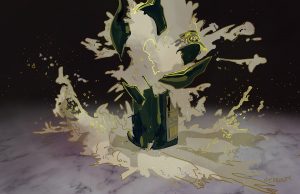
The magnum rolled toward me, a wave of muddy brown fluid ahead of it, as Delta succumbed, his flesh betraying his rage at what Beta had done. Everything was ruined now.
To read the rest of this story, check out the Mad Scientist Journal: Autumn 2017 collection.
Upton Stone claims to be a clone of Elias Stone, famed bioresearcher. He also claims to have witnessed several murders, of which authorities can find no evidence. Stone, regardless of first name, has been remanded to the local mental health facility after his apparently self-inflicted wounds were seen to.
John A. McColley claims to be a recent father of three, living at the edge of a three-hundred-acre wood. Evidence mounts that he, too, has lost touch with reality after months of sleep deprivation, spinning tales of mechanical men and magic. He reports waking many times a night to the screaming of very cute, but very angry, tiny, twin demons who demand milk and diaper changes.
Errow is a comic artist and illustrator with a predilection towards the surreal and the familiar. She pays her time to developing worlds not quite like our own with her artist fiancee and pushing the queer agenda. She probably left a candle burning somewhere. More of her work can be found at errowcollins.wix.com/portfolio.
“Killing Stone” is © 2017 John A. McColley
Art accompanying story is © 2017 Errow Collins

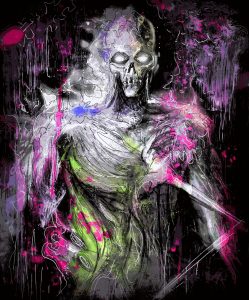
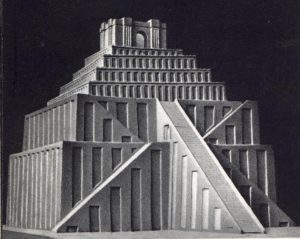
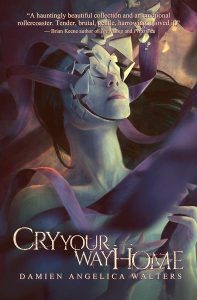

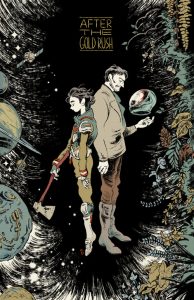
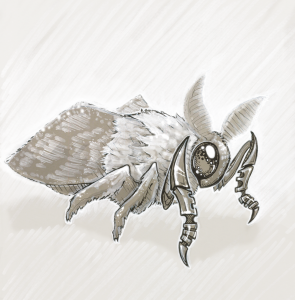

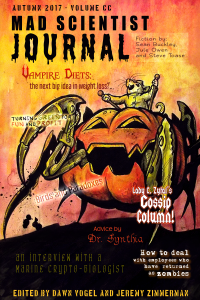 For the month of December, we will be looking for submissions of quarterly-exclusive stories (which do not have to be first person) and classified ads. To learn more about these types of submissions, check out our
For the month of December, we will be looking for submissions of quarterly-exclusive stories (which do not have to be first person) and classified ads. To learn more about these types of submissions, check out our